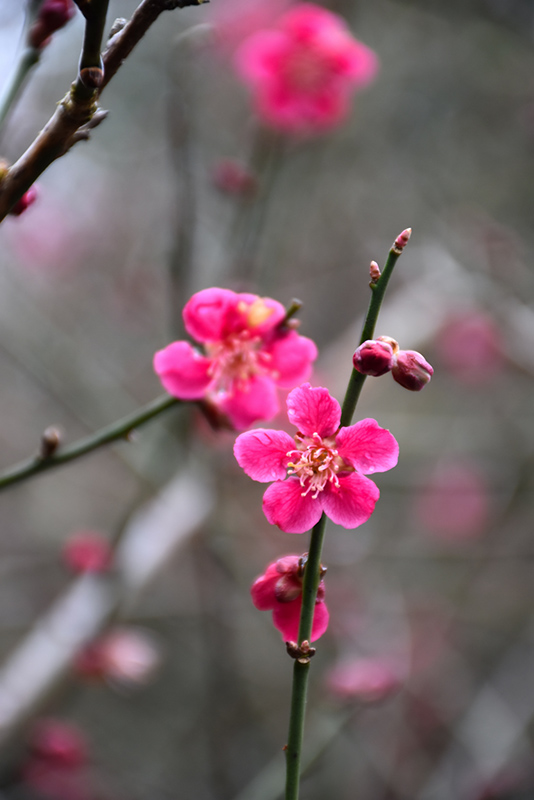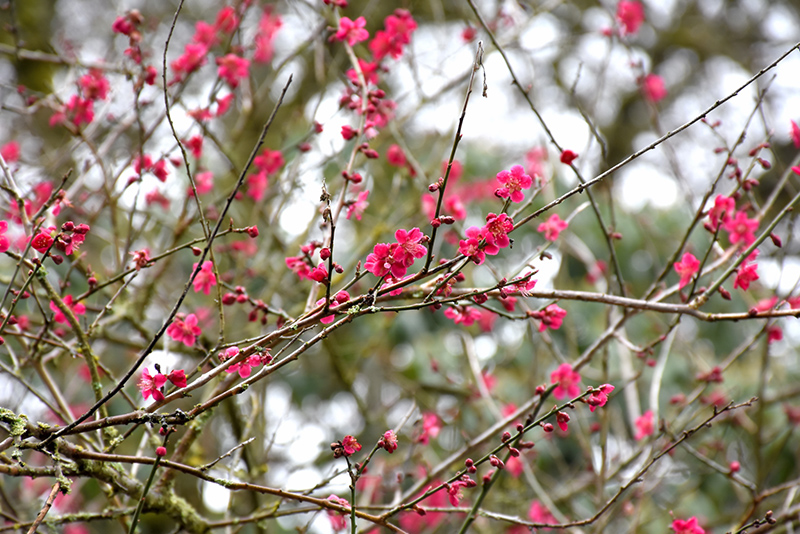>> Home
Height: 20 feet
Spread: 20 feet
Sunlight:
![]()
Hardiness Zone: 5b
Description:
A rare yet worthy ornamental tree with spicy-fragrant rich rose-pink flowers in late winter well before the leaves followed by inedible fruit, relatively reserved the rest of the season yet never out of place; an ideal size for the home landscape
Ornamental Features
Japanese Apricot is draped in stunning clusters of fragrant rose flowers along the branches in late winter before the leaves. It has green deciduous foliage. The pointy leaves turn yellow in fall. The fruits are showy yellow drupes displayed in late summer. The fruit can be messy if allowed to drop on the lawn or walkways, and may require occasional clean-up.
Landscape Attributes
Japanese Apricot is a deciduous tree with a more or less rounded form. Its average texture blends into the landscape, but can be balanced by one or two finer or coarser trees or shrubs for an effective composition.
This tree will require occasional maintenance and upkeep, and is best pruned in late winter once the threat of extreme cold has passed. It is a good choice for attracting birds to your yard. Gardeners should be aware of the following characteristic(s) that may warrant special consideration;
- Messy
- Disease
Japanese Apricot is recommended for the following landscape applications;
- Accent
Planting & Growing
Japanese Apricot will grow to be about 20 feet tall at maturity, with a spread of 20 feet. It has a low canopy with a typical clearance of 3 feet from the ground, and is suitable for planting under power lines. It grows at a medium rate, and under ideal conditions can be expected to live for 40 years or more.
This tree should only be grown in full sunlight. It does best in average to evenly moist conditions, but will not tolerate standing water. It is not particular as to soil type or pH. It is highly tolerant of urban pollution and will even thrive in inner city environments. This species is not originally from North America.

